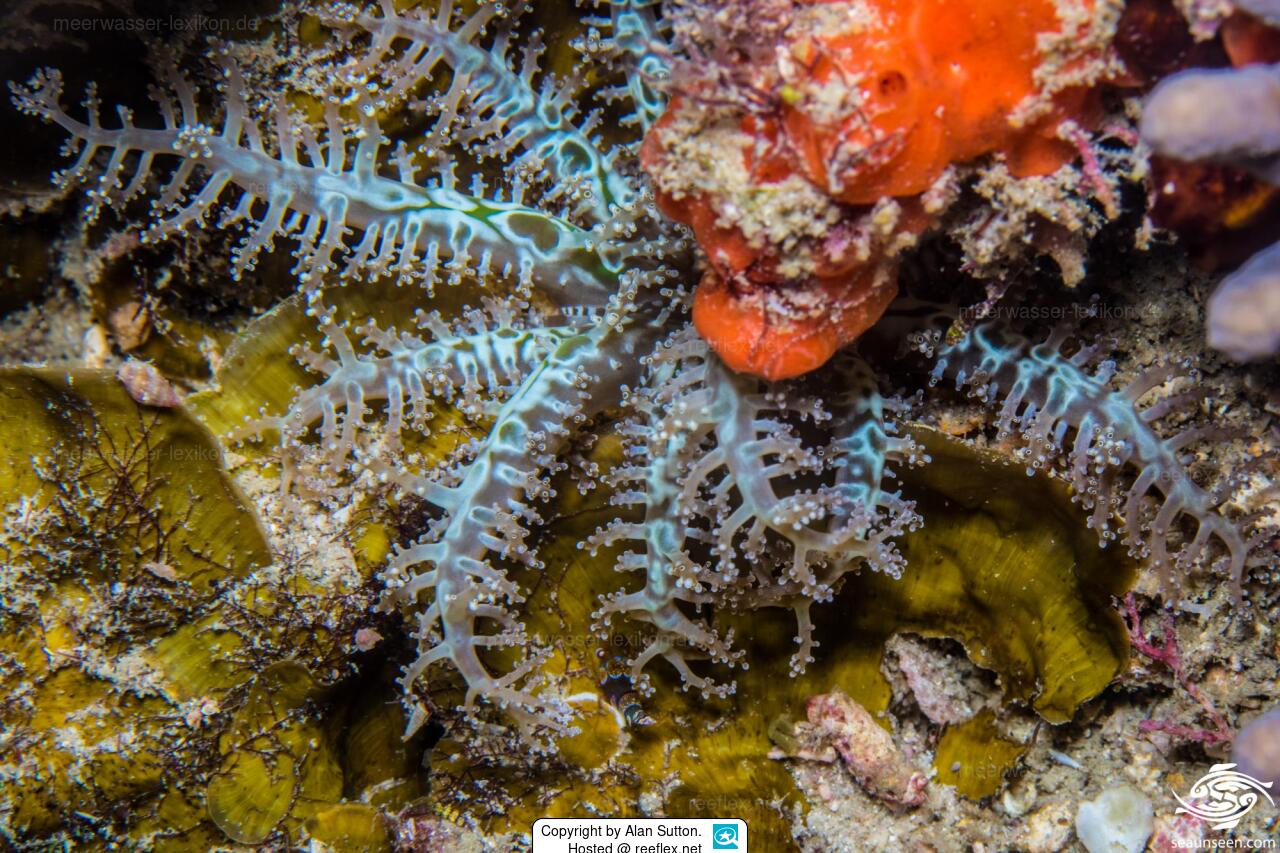Info
The genus Megalactis contains unique sea anemones that look more like soft coral colonies than actinia. They typically have branched tentacles with white spherical swellings.
Megalactis sea anemones are found on coral-rich slopes and slopes with coral gravel and in shallow, sandy and muddy areas. They bury their body in the substrate and attach the foot to hard surfaces below, with only the oral disk and tentacles protruding.
When disturbed, these sea anemones can quickly retract their entire body into the sand and are then virtually invisible.
The description of Megalactis hemprichii, the type species of the genus, was diagnostic in the early 19th century. The mere mention that a sea anemone had double-feathered tentacles was enough to distinguish Megalactis hemprichii from all sea anemones known at the time. With current knowledge, the original description of Megalactis hemprichii does not distinguish it from other Megalactis species: the bipinnate arrangement of the branches is generic rather than specific. Type specimens ofMegalactis hemprichii have not been found. A new description was made in 2004 of specimens from the Red Sea.
The fire anemone Megalactis hemprichii also strongly resembles a soft coral, which can lead to confusion. But be careful, it nettles extremely strongly and very painfully. Megalactis hemprichii is not called a “fire anemone” for no reason!
Synonymised names
Actineria hemprichi Ehrenberg · unaccepted
Megalactis hemperichii · unaccepted
Megalactis hemprichi Ehrenberg, 1834 · unaccepted







 Alan Sutton, Tansania
Alan Sutton, Tansania







